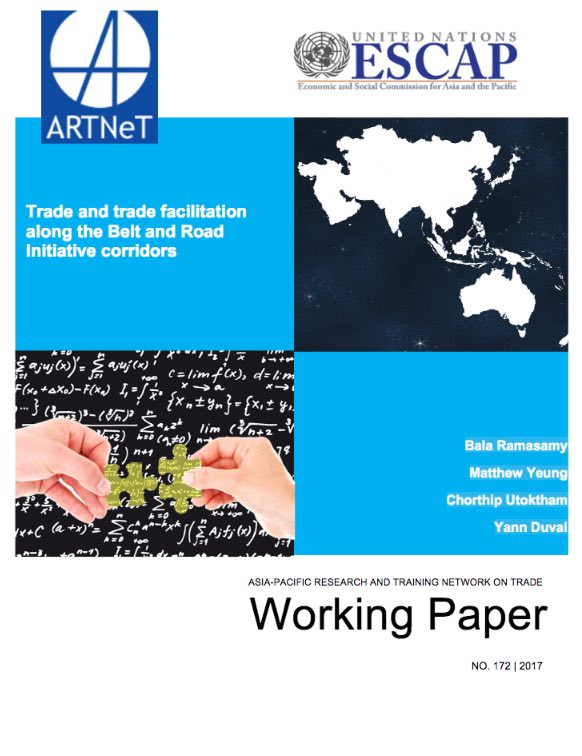Trade and trade facilitation along the Belt and Road Initiative corridors

The Belt Road Initiative (BRI) suggested by China’s President Xi Jinping provides an ambitious vision encouraging a new level of cooperation among countries along several economic corridors spanning most of the Asian economies member of ESCAP. This paper reviews the trade and trade facilitation situation of economies along each of the corridors and analyzes the potential impact on trade from improvements in hard (physical connectivity via good quality transportation networks) and soft (efficient trade facilitation via an effective border administration and use of ICT) infrastructures. The review highlights enormous differences among the economies involved, as well as the 6 BRI corridors studied – namely, Bangladesh-China-India-Myanmar (BCIM), China-Mongolia-Russia (CMR), China-Central Asia-West Asia (CAWA), China-Indochina Peninsula (ICP), China-Pakistan (CP), and the New Eurasian Land Bridge (NELB). Results of the econometric analysis show the importance of both hard and soft infrastructures in enhancing export performance of economies involved in the BRI. Trade gains from improvements in trade facilitation and other trade enablers vary from corridor to corridor. Our analysis suggests that trade gains from incremental trade facilitation improvements would be highest for the CMR, CP, and the ICP corridors, in this order. On the other hand, trade gains from hard infrastructure investments would be relatively higher in the CP, ICP and BCIM corridors, also in this order. Finally, improvements in ICT availability and use may yield relatively higher trade returns in the CMR and the NELB corridors.
